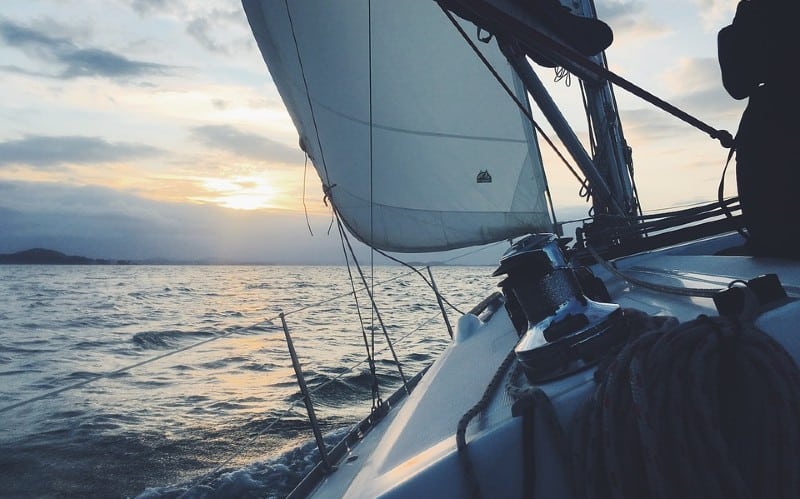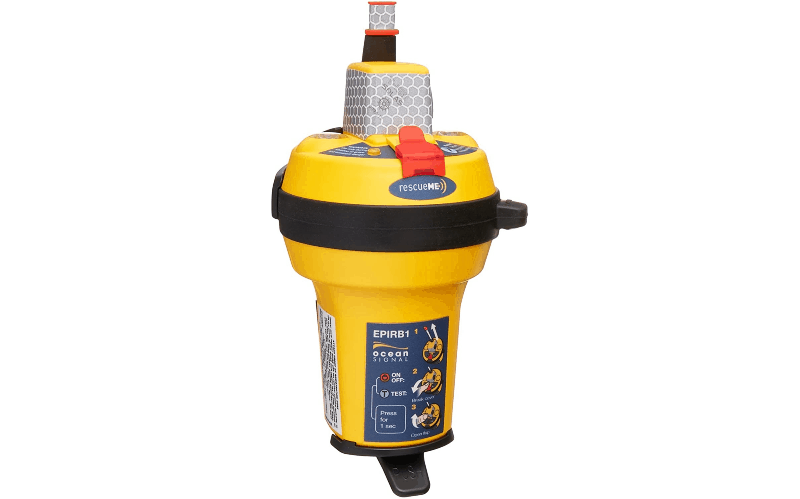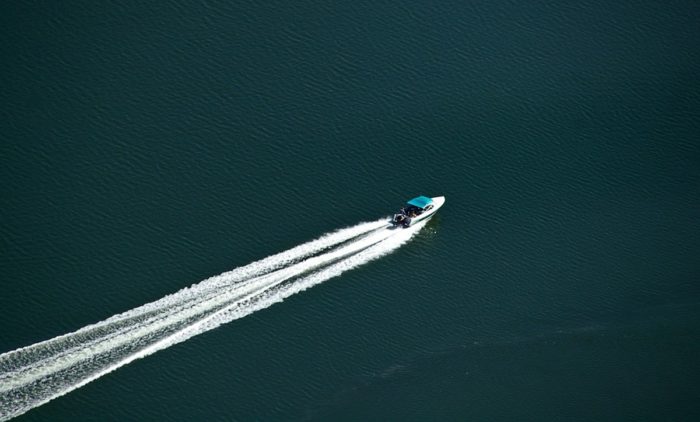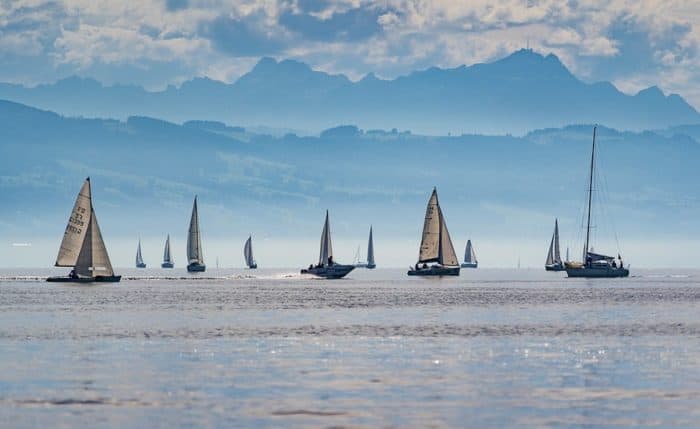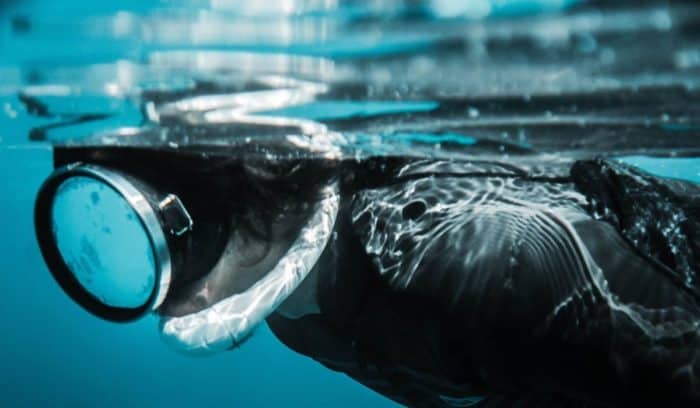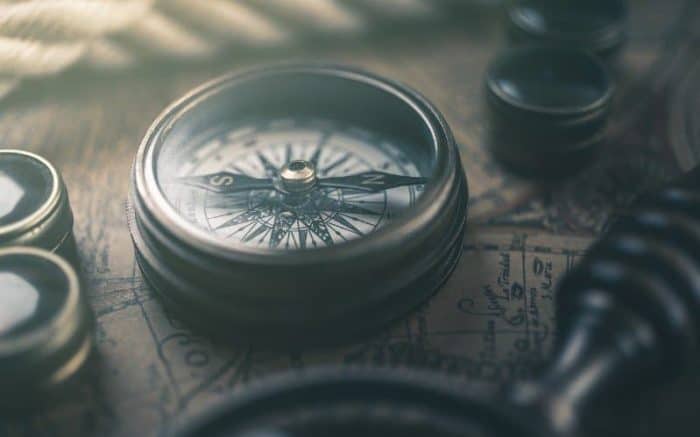Estimating Time of Arrival
Some people don’t like to live by a schedule. They come and go whenever. Making a plan is often difficult with someone like this. You want to have dinner, and they come over whenever. If you’re serious about boating, this won’t work. You need to understand how to calculate an estimated time of arrival. Also, how to stick to it.
In many places, if you want a deck license you must be able to calculate time of arrival. And just in general, it’s good to know. Even a casual boater should have some idea of times and distances. This is helpful not just for you but for others as well. Officials at the marina may need to know your estimated time of arrival. Likewise, friends and family will probably need this as well. Finally, in an emergency, the U.S. Coast Guard can make use of this information.
Let’s take a look at what ETA means. Also, the best way for you to calculate your estimated time of arrival. And then finally, why it’s even important as well as other factors to consider.
What is ETA?
ETA stands for estimated time of arrival. It sounds simple, and in some respects it is. You are leaving the marina and you want to reach your friend’s cabin to do some fishing. You look at the distance between the two. You figure how fast your vessel travels. You get a rough idea of the time it will take.
Estimated time of arrival is something nearly everyone calculates all the time. This is on boats and on land. You tell a friend you’ll be at their place in 10 minutes. You want to leave the house 15 minutes before a movie starts so you can see the previews. It’s usually a very simple estimation.
When it comes to boating, estimated time of arrival can be more involved. You have additional factors to consider. Navigation times are not always consistent. And whether you are in a vessel under power or sailing also matters.
If the weather is not being cooperative, estimated time of arrival can be thrown off. If you have trouble navigating out of the marina, this can also throw off your time of arrival. For instance, if you get stuck waiting for another vessel to move.
In very simple terms, your estimated time of arrival is just that. It’s the time that you plan to arrive. You need to factor in a few key elements to solve the equation.
What is the Formula to Calculate ETA?
There are three elements in any equation to determine an estimated time of arrival. Any equation like this can be solved when you have two of the three factors. Once you know any two, the third can be easily determined.
Distance: This is the distance between where you are and where you plan to go. On the water you’re going to measure this in nautical miles. There can be mitigating factors in how this number is determined. For instance, let’s say you need to navigate around certain obstacles. This could add distance to your calculation. A trip on the water may not always be a straight line.
Speed: This is how fast you plan to travel from your starting point to the end. If your vessel is under power, this is usually very easy to determine. If you are sailing and relying on wind, it can be harder to figure.
Time: This is what you need to solve for. In an estimated time of arrival equation, it is a given you know distance and speed. In terms of simple math, you could solve speed if you knew time and distance. You could solve distance if you knew speed and time.
Distance = Speed x Time
Speed = Distance/Time
Time = Distance/Speed
This little diagram can help you remember how to work the numbers if you’re not sure. When you want to figure out any of those numbers, just cover the letter up with a finger. What’s left is the formula to solve it.
When it comes to estimated time of arrival, we need that last equation. So we’re going to be looking at distance divided by speed to solve. Let’s try an example using the formula.
You want to reach your friend’s cabin. It’s 29 nautical miles from your marina. You plan to head out at a speed of 12 kts. Not too fast, not too slow. Punch in the equation and we can see how it works.
Time = 29/12 = 2.42 hours.
IMPORTANT: The way that’s written can be read as two hours and 42 minutes. That is not the correct time solution. It is 2 hours plus 42/100 of an hour. It’s a fraction, not a time based on a 60 minute hour.
As an example, let’s say the speed was 17 kts. Then you get this equation;
Time = 29/17 = 1.71 hours. Obviously this is not one hour and seventy-one minutes, no one writes time like that. Instead, it’s one hour and 71/100 of an hour. So now we can convert these to a more understandable time. Let’s go back to our 2.42 hours.
In order to determine minutes, you simply multiply your fraction by 60. In this case, 0.42 x 60. The answer is 25.
Time = 2 hours and 25 minutes is the solution.
For our second example, at 17 knots, you get 43 minutes. The estimated time of arrival in this case would be 1 hour and 43 minutes.
Once you have this figured out, you can determine when you need to leave port to meet your estimated time of arrival. Let’s say in our example you wanted to be at your friend’s cabin for lunch at noon. You know the trip is going to take you 2 hours and 25 minutes. Convert that to minutes and you have 145 minutes.
12:00pm – 145 minutes (2 hours and 25 minutes) = 9:35 am. So you want to make sure you’re leaving the marina at 9:35 in the morning if you plan to make your lunch date.
Just as a point of confirmation, let’s calculate in reverse. As we said, if you know any two numbers you can determine the third in the formula. So let’s say your friend was waiting for you. They know your trip took two hours and 25 minutes. They know you were travelling at 12 knots. Now they want to know how far you travelled. So they can do the distance calculation with this formula.
Distance = Speed x Time
Distance = 12 kts x 2.42 hours
Distance = 29 nautical miles
So the equation did the reverse, and as you can see, we have the same distance. You travelled 29 nautical miles to your destination. To round it out, let’s calculate for speed.
Speed = Distance/Time
Speed = 29 nautical miles/2.42 miles
Speed = 12 knots
If you’re ever unsure of your math, this is a good way to check. Do one of the other equations with your number punch in. If you get the same results for time, distance, or speed, you’re good. That means you did your math correctly. If your numbers are way off, then you may have made a mistake. Run the calculation again to double check. In a pinch, have a friend do it. Sometimes a fresh set of eyes can pick up a miscalculation.
If you punch in any of the equations yourself, you’ll see the numbers are slightly off. For instance, 29/2.42 comes out to equal 11.9834710744. Obviously that’s a needlessly long number. It’s so close to 12, you just round it up in the solution. Remember, Estimated is the key word in Estimated Time of Arrival.
Understanding Distance Calculations
This calculation works with knots. Knots are measured in nautical miles and they are not the same as miles on land. When you travel at a speed of one knot you are actually going at 1.15 miles per hour. So how do you calculate for time if you measure speed in miles per hour?
The fact is not everyone is capable of measuring speed in knots right away. If you’re new to boating a knot is as confusing as a parsec or a hectare. But you can convert miles per hour to knots easily enough. It’s good to have a calculator on hand for this. Fortunately, if you have a smart phone you have a calculator. That makes the equation easier.
1 mile/hour = 0.868976 knots (kts). So if your boat is travelling at 20 miles per hour, you’re going at about 17 knots.
Calculating ETA in a Sailboat
Figuring out your estimated time of arrival when you have an outboard is not very hard. The equation lays it all out very simply. But you may be wondering what to do in a sailboat. If you rely on wind, how can you determine your ETA? You can’t set a specific speed for wind, right?
Basically, when you’re on a sailboat, you need to calculate an estimated time of arrival on the fly. Once you’re underway, it’s easy enough to calculate cruising speed. In fact, you probably have a GPS that does it for you.
With a little practice, you should be able to gauge wind speed before you set out. This will help you determine what speed your sailboat is likely to be sailing at. From there it’s the same equation all over again.
Just remember, a sailboat has an average cruising speed of around 4 to 6 knots. But you can certainly get up around 15 knots as well. The calculation works the same regardless of speed or type of vessel.
Calculating ETA in a Small Boat
Now what happens if your vessel doesn’t have an engine? And it doesn’t even have sails? Let’s say you’re out on a bass boat. Maybe an old canoe. You paddled this thing out onto the water. How do you calculate ETA then?
Well, first and foremost, you have grit. Making a trip anywhere in a boat under manpower is an undertaking. For the most part. Estimated time of arrival isn’t usually calculated for boats of this size. That said, as a canoer or kayaker on a long trip, it may be important.
If you head out in a kayak and want an accurate estimated time of arrival, GPS is vital. The satellites can track your position at different points on your journey. Based on that distance your travel over a certain time, your speed can be determined. From there you can, of course, calculate an ETA.
Small boat estimated time of arrival is harder than many people think. Without GPS it is all but impossible. Even with GPS it is an in-the-moment thing. It would be very hard to calculate ahead of time. That’s not to say it’s impossible, but you need information about your route. For instance, if you’re taking a kayak in a river with a rapid current, this greatly affects speed. Does the current change at different times of year? When was it measured last?
There are many factors that will affect ETA for a small boat. Even ones in your control can alter the final number. If you’re tired your ability to paddle may suffer. Even the length of your paddles affects estimated time of arrival.
Portage times, complications along the way and more affect small boat ETA. In many ways it is far more complex than arrival times on open water.
The other key difference with many small boat trips is location. You are in a position in the water to get to land much more easily. If things get complicated or dangerous, you can go to shore. Rivers are rarely so broad that you can’t find a safe place to tie your boat up.
Why is ETA Important?
Estimated time of arrival has a number of benefits. The most obvious is you’re going to know when you’ll get to your destination. For many boaters, the big questions are how far, how fast, and how long. That’s distance, speed, and time all over again. If you’re just pleasure boating then it may not be that important. But when you need to get somewhere, it really is.
ETA is also an important thing for those on shore to know. You want to have an ETA as part of your float plan if at all possible. Friends and family will know when you expect your arrival so it makes planning easier.
The biggest benefit of a calculated ETA is what it can mean for search and rescue. If people know to expect you at 3:00 and you don’t arrive, efforts can start right away. With no definite ETA you could be missing for hours and no one would know. It may take as much as day before someone realizes there’s a problem. Consider ETA a safety feature.
The Coast Guard can use your ETA to determine where and when things may have gone wrong. They can calculate your route and figure out what may have happened to you in the event of an emergency.
Factors that Affect ETA
The biggest thing to remember about ETA is that it is estimated time of arrival. It is not definite time of arrival. A lot of factors can throw your ETA off. Sometimes this can be quite drastic. While it is impossible to plan for the unexpected, you can be aware of it. Any of these factors may alter your ETA.
Weather: It’s always a good idea to check the local weather forecast before going boating. Having a working radio to monitor changing conditions is also key. Still, even the best laid plans can go awry. If the weather kicks up suddenly, you can be left in the lurch. Weather could inhibit your ability to travel at the planned speed. Fog will require you to slow down considerably, for instance. Heavy winds may end up pushing you off course. Rough seas could be so bad you may have to turn around entirely. Planning will help mitigate this. But it’s still a possible obstacle to be aware of.
Obstructions: This is a rare concern, but not unheard of. It’s much more prevalent if you are travelling narrow channels. Or in a crowded marina. You may have to wait for other vessels to clear the way. If you are in a small boat, something as simple as a downed tree could alter your course drastically.
Sandbars, reefs, debris and more can wreak havoc with a boat on the water. In the worst circumstances, you can suffer hull damage and end up taking on water. You may also find yourself run aground and in need of aid. Make sure you know the proper light signals and sound signals. Call for help when you need it. It’s always better to be safe than sorry.
Equipment: Most of the time ETA is calculated under ideal circumstances. You only have those three numbers to work with, after all. But things can go wrong. Electronic failure on your boat could shut things down. Maybe your engine overheats. Or it could run out of gas. Propeller damage or hull damage could also arise. You could have an issue with your sails or paddles.
It’s always good to be prepared for these unexpected emergencies. Checking fuel and oil before you depart is something you should always be doing. Likewise your batteries, lines, and sails. Still, accidents do happen. Things get overlooked. Any of these pieces of equipment could malfunction. In that case, you may end up stranded.
Make sure your radio is in good working order any time you head out. An EPIRB is also a good idea in case of emergencies.
Other Boaters: We already mentioned the issue related to having to wait for other vessels. You need to follow the rules of the road out on the water. Give way when required to other vessels. Especially larger boats. It’s never a good idea to test your luck against a boat that can crush you in its wake.
Beyond that, you may find an issue with another boater. If you get a signal from another boat in distress, you may have to change course to help. If there is a Man Overboard situation and you are the nearest vessel, you need to act. Obviously this is going to alter your ETA.
Emergencies: You never know what may happen when you hit the open water. It’s the same as anywhere else in life. You or a passenger may suddenly fall ill. Heart attack, food poisoning, a broken bone after slipping. Things happen all the time.
You should have an emergency first aid kit on board all the time. Cuts, scrapes and minor breaks can be dealt with when they happen. This will buy you the time you need to get proper medical assistance for any problems.
Make sure you and every other passenger knows where emergency equipment is located. This includes things like life jackets and personal flotation devices. You should all know how to use the VHF radio, and to turn it to Channel 16 in case of emergencies.
You’ll need a fire extinguisher on board as well. Everyone should know its location and how to use it.
Emergencies are just that, emergencies. They are unpredictable and unexpected. They can take many forms. And they can drastically alter your estimated time of arrival.
Personal Choices: Unless you’re on a very strict schedule, you may just want to have fun. Maybe you’re out fishing for a few hours. Your ETA is 4:00. When 3:30 rolls around you decide it’s time to head in. And just at that moment, you hook a monster. Are you going to let it go to meet your ETA? Probably not. It’s unlikely anyone will fault you for that, either.
Boating is supposed to be fun and relaxing. So if you’re having fun and relaxing, a schedule can sometimes be sacrificed. But, in these cases, you should alert someone. Use your radio or a cell phone to let whoever is expecting you know. Plans change, but it’s polite to keep everyone in the loop. Also, it can help avoid situations where people think an accident has happened.
The Bottom Line
Estimated time of arrival is a handy tool to have at your disposal. It lets you plan your boat voyage more efficiently and, in turn, you whole day. Remember that it’s not a rule, though. If your ETA is noon and you’re going to miss it by a large margin, don’t panic. Boating responsibly is still job number one. If something has altered your estimated time of arrival, that’s OK. If possible, radio or call others to let them know you’re behind. If not, just roll with it.
What you don’t want to do is try to overcompensate at the risk of safety. Don’t go faster than is reasonable. Don’t try to skirt any of the rules of the road to save time. Better to be a little late and get there in one piece.
As we have said, the estimated time of arrival is just an estimate. It’s OK to be a little off. Sometimes even a lot off. Especially if the difference is having an accident and needing emergency rescue.
Categories: Tools and Calculators





